Waddling Wildlife Conservation
This post is greater than 6 months old - links may be broken or out of date. Proceed with caution!

By Lorna Moffat, Experienced Animal Keeper, Edinburgh Zoo
Penguins have been an integral part of the Royal Zoological Society of Scotland’s (RZSS) history and have played an important role in our charity’s conservation projects around the globe since Edinburgh Zoo opened in 1913.
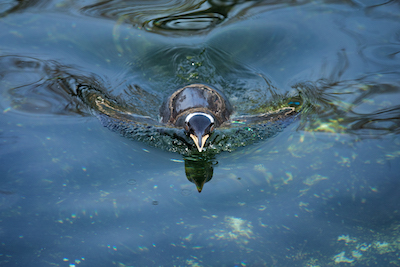
With their funny waddles, tuxedo attire and charismatic personalities, penguins have been well loved by people around the world for decades. Depicted heavily in nature documentaries, cartoons, Christmas cards and movies, many people imagine there are millions of these birds in the southern hemisphere. Sadly, just like many other species, this is far from true.
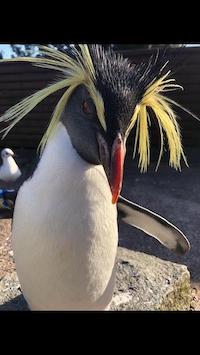
Of 18 species of penguin, 12 are listed by the International Union for Conservation of Nature (IUCN) as experiencing some level of population decline. All penguin species face similar threats, with the majority inflicted by humans. Over-fishing has depleted food sources for many animals, which has a detrimental impact on the marine ecosystem and the entire food chain. Climate change is also a growing concern, particularly for penguins that live in Antarctica. These species depend on sea ice for access to food and nesting areas, and as sea ice disappears so do penguin populations.
Penguins spend as much as 80% of their lives in the water and Edinburgh Zoo has built one of the largest outdoor pools in Europe for the three species that live there - gentoo, king and Northern rockhopper. The zoo’s Penguins Rock enclosure is currently home to over 100 cheeky penguins, who live together as one colony in their 65-metre-long, 3.5-metre-deep swimming pool. The pool contains 1.2 million litres of water!
In the wild, the Northern rockhopper penguin lives in the temperate South Atlantic and Indian oceans, breeding on seven islands - five in the Tristan da Cunha group in the South Atlantic, and Amsterdam and St Paul islands in the southern Indian Ocean. Penguin numbers on Tristan da Cunha are thought to have declined from the hundreds of thousands in the 1870s to just 5,000 pairs by 1955. RZSS has helped with the conservation of rockhopper penguins on Tristan da Cunha for many years, including supporting with annual surveys, public dissemination of data and information and public engagement. In 2017, our charity helped with the creation of the first global bilingual action plan for the species, and our RZSS WildGenes laboratory is now working on genetic analysis of the species to understand how connected the penguin populations are across these distant island groups. Edinburgh Zoo’s Northern rockhopper penguins act as ambassadors for this conservation works and for their species in the wild.
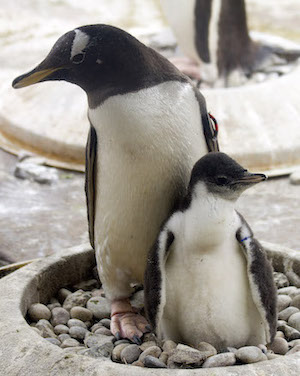
Penguins are incredibly social birds, so the larger the flock the better. Being able to court with different breeding partners, having a disagreement with a neighbour or having safety in numbers when rearing chicks helps maintain the health and wellbeing of the birds.
One fact that cannot be denied, penguins eat fish and therefore smell like fish. Being piscivores, penguins are solely fed a fishy diet and the species of fish they are fed is very important. At Edinburgh Zoo, we offer our colony a native fish diet but they seem to prefer the fatty and salty sprat over krill and squid, which offer behavioural enrichment opportunities over nutritional importance. It is important we make sure they are fed the right balance, to ensure they are fit and healthy.
People think working with penguins is an easy job – feeding, cleaning, feeding, cleaning – but it is essential to have keepers that are passionate about the birds and know each individual’s feeding habits, preferred sleeping spots, previous illnesses and so much more. Every penguin has a totally different personality – some are friendly, some are grumpy, some fling their fish when feeding and some greet you with a honk in the morning. Knowing each bird on an individual basis, down to being able to identify them without their coloured flipper-band on, is a real advantage. It also highlights each animal as autonomous individuals with particular wants and needs.
Behind the scenes there is also intense record keeping, onsite research and hand-rearing chicks in unprecedented circumstances. It can be stressful, especially during breeding season, but the end results are healthy chicks and adult penguins which are able to exhibit natural behaviours in a naturalistic environment!
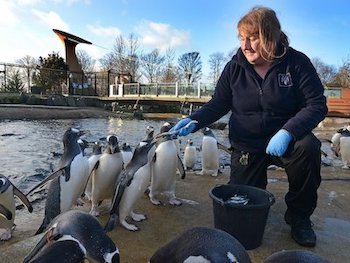
Being a penguin keeper is undoubtably a fun, rewarding and challenging job. There's always something happening at the zoo’s Penguins Rock and thanks to our charity’s free online webcams, anyone, anywhere in the world, can watch our king, gentoo and rockhopper penguins enjoy playing in the waterfall, sliding down the water chute and sunbathing on floating 'icebergs' in the pool. Visit www.edinburghzoo.org.uk/penguincam to watch it all for yourself.
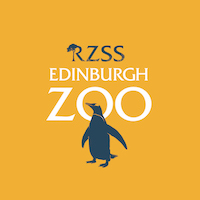
Find out more about Edinburgh Zoo and RSZZ
https://www.edinburghzoo.org.uk/
https://www.edinburghzoo.org.uk/webcams/penguin-cam/#penguincam
Find out more about working with animals and wildlife work on the CJS job sector pages
More from Royal Zoological Society of Scotland